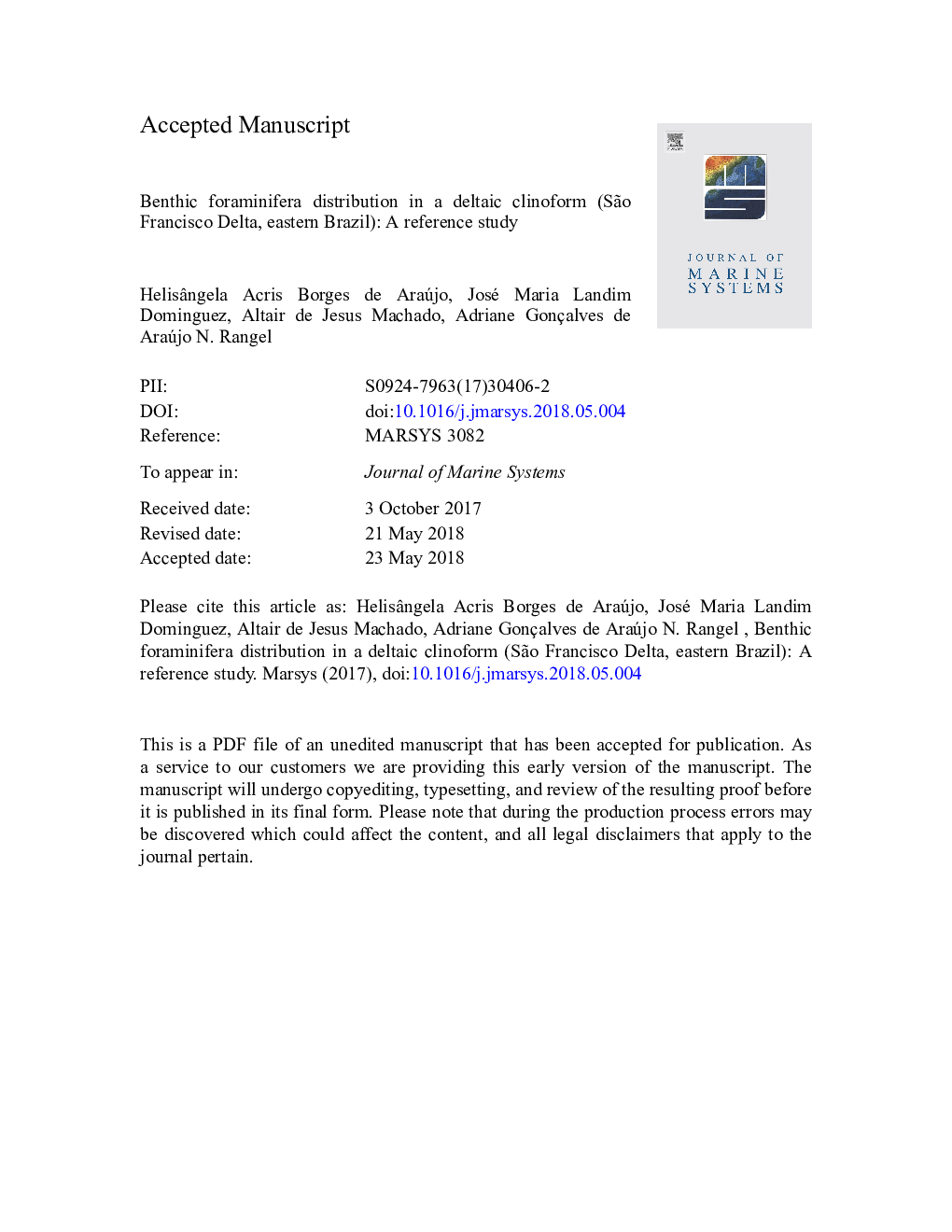| Article ID | Journal | Published Year | Pages | File Type |
|---|---|---|---|---|
| 8885906 | Journal of Marine Systems | 2018 | 59 Pages |
Abstract
Foraminifera distribution in surface sediment of the continental shelf is controlled by several environmental factors. Expansion and spreading of fluvial plumes significantly change environmental conditions at shelf areas facing river mouths. The present work contributes with an in situ reference study on the spatial distribution of foraminiferal assemblages in the surface sediments of the São Francisco delta clinoform and adjacent areas (outer shelf and homonymous submarine canyon). Four benthic foraminiferal biofacies were identified based on quantitative and qualitative analyses of foraminiferal microfauna from 116 sediment samples. Biofacies I and II, both dominated by Ammonia beccarii, perfectly delimit respectively the topset and upper foreset portions of the delta clinoform. Biofacies III characterizes the area around the São Francisco canyon head, which is partially buried by the clinoform. This biofacies is dominated by Globocassidulina subglobosa and Hanzawaia concentrica and typifies an important stratal surface, known as the Maximum Flooding Surface, over which the clinoform progrades. Biofacies IV, dominated by Textularia spp., characterizes the clinoform bottomset and outer shelf sediments. The outer shelf is typically covered by bioclastic sand and gravel. In this region, besides Textularia spp., biofacies IV also comprises macro-foraminifera species, such as Amphistegina spp., Archaias angulatus and Peneroplis spp., typical of reef bottoms.
Keywords
Related Topics
Physical Sciences and Engineering
Earth and Planetary Sciences
Oceanography
Authors
Helisângela Acris Borges de Araújo, José Maria Landim Dominguez, Altair de Jesus Machado, Adriane Gonçalves de Araújo N. Rangel,
